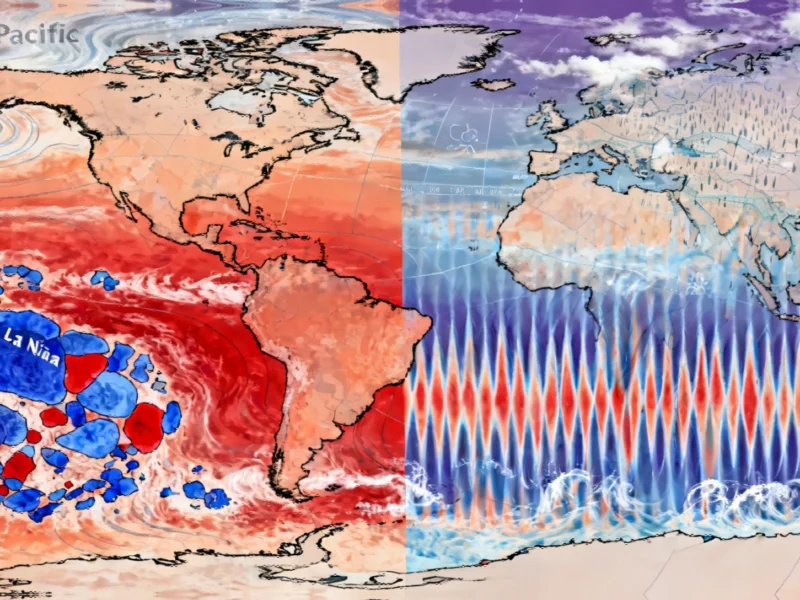Note: Featured image is for illustrative purposes only and does not represent any specific product, service, or entity mentioned in this article.
The Southern Ocean’s Unexpected Carbon Capture Performance
While climate models have consistently predicted a decline in the Southern Ocean’s ability to absorb atmospheric carbon dioxide, observational data reveals a surprising resilience that has puzzled scientists for years. This massive body of water surrounding Antarctica continues to function as a crucial carbon sink despite climate change impacts, absorbing approximately 40% of all oceanic anthropogenic CO₂ emissions. New research from the Alfred Wegener Institute provides compelling evidence that subsurface water dynamics are responsible for this unexpected performance, challenging long-held assumptions about how climate change affects oceanic carbon cycles.
Unraveling the Scientific Mystery
For decades, climate models projected that strengthening westerly winds—driven by climate change—would increase upwelling of carbon-rich deep waters, thereby reducing the Southern Ocean’s capacity to absorb human-generated CO₂. “Previous studies suggested that global climate change would strengthen the westerly winds over the Southern Ocean, and with that, the overturning circulation too,” explains Dr. Léa Olivier, AWI oceanographer and lead author of the study published in Nature Climate Change. “However, that would transport more carbon-rich water from the deep ocean to the surface, which would consequently reduce the Southern Ocean’s ability to store CO₂.”
Despite these predictions, comprehensive data analysis spanning nearly five decades shows no significant reduction in carbon absorption. The research team examined biogeochemical data from numerous marine expeditions between 1972 and 2021, focusing specifically on circulation patterns and water mass properties while excluding biological processes. Their findings reveal a complex interplay between surface and deep water masses that current climate models may have overlooked.
The Critical Role of Water Stratification
The Southern Ocean’s carbon absorption mechanism depends heavily on the relationship between two distinct water masses. Deep water, typically found below 200 meters, is salty, nutrient-rich, and contains substantial amounts of dissolved CO₂ accumulated over centuries. Surface water, in contrast, is less salty, colder, and contains less CO₂. The density difference between these layers creates a natural barrier that prevents carbon-rich deep water from reaching the surface.
“What surprised me most was that we actually found the answer to our question beneath the surface,” says Olivier. “We need to look beyond just the ocean’s surface, otherwise we run the risk of missing a key part of the story.” This subsurface perspective revealed that increased freshwater input from precipitation and melting glaciers has reduced surface water salinity since the 1990s, strengthening the density stratification between water masses.
Freshwater Input: A Temporary Climate Buffer
The “freshening” of surface waters has created a more distinct separation between water layers, effectively trapping CO₂-rich deep water beneath a low-salinity barrier. This phenomenon has temporarily offset the weakening of the carbon sink that models predicted. “Our study shows that this fresher surface water has temporarily offset the weakening of the carbon sink in the Southern Ocean, as model simulations predicted,” Olivier summarizes. “However, this situation could reverse if the stratification were to weaken.”
This discovery highlights how interconnected Earth systems can create unexpected feedback loops. Just as recent industry developments in environmental monitoring have revealed complex system interactions, the Southern Ocean research demonstrates that climate responses are often more nuanced than initial models suggest.
Emerging Threats to Oceanic Carbon Storage
Despite the current resilience, researchers have identified worrying trends that could compromise the Southern Ocean’s carbon storage capacity. Since the 1990s, the upper boundary of the deep water mass has shifted approximately 40 meters closer to the surface, bringing CO₂-rich water dangerously close to overcoming the stratification barrier. Strengthening westerly winds continue to push deep water upward while simultaneously increasing mixing potential between layers.
Recent evidence suggests this destabilization process may have already begun. As the transition layer moves closer to the surface, it becomes more susceptible to wind-driven mixing that could release accumulated CO₂. This scenario mirrors concerns in other fields where system stability is crucial, similar to how recent technology infrastructure can be disrupted by unexpected interactions between components.
Research Implications and Future Directions
The study underscores the importance of continuous monitoring and data collection, particularly during winter months when water masses experience increased mixing. “To confirm whether more CO₂ has been released from the deep ocean in recent years, we need additional data, particularly from the winter months,” explains co-author Prof. Alexander Haumann. The AWI plans to investigate these processes further through the international Antarctica InSync program, aiming to better understand climate change impacts on the Southern Ocean.
This research approach reflects a broader trend in scientific investigation, where market trends in data analysis are increasingly emphasizing comprehensive, multi-dimensional understanding of complex systems. Similarly, advances in related innovations across various industries demonstrate how subsurface or hidden factors can significantly influence system performance.
Broader Implications for Climate Science
The Southern Ocean findings have significant implications for global climate projections and carbon budget calculations. Understanding why and how the ocean continues to absorb carbon despite changing conditions could inform more accurate climate models and policy decisions. The research also highlights the importance of accounting for multiple interacting variables in environmental forecasting, much like how industry developments in computational modeling are addressing complex system behaviors across various sectors.
As climate change continues to alter Earth’s systems, the Southern Ocean serves as both a crucial carbon sink and a natural laboratory for understanding how interconnected processes can produce unexpected outcomes. The temporary resilience offered by changing water stratification provides a valuable—though potentially short-lived—buffer against accelerating climate change, emphasizing the urgent need to reduce global carbon emissions while advancing our understanding of oceanic processes.
This article aggregates information from publicly available sources. All trademarks and copyrights belong to their respective owners.

